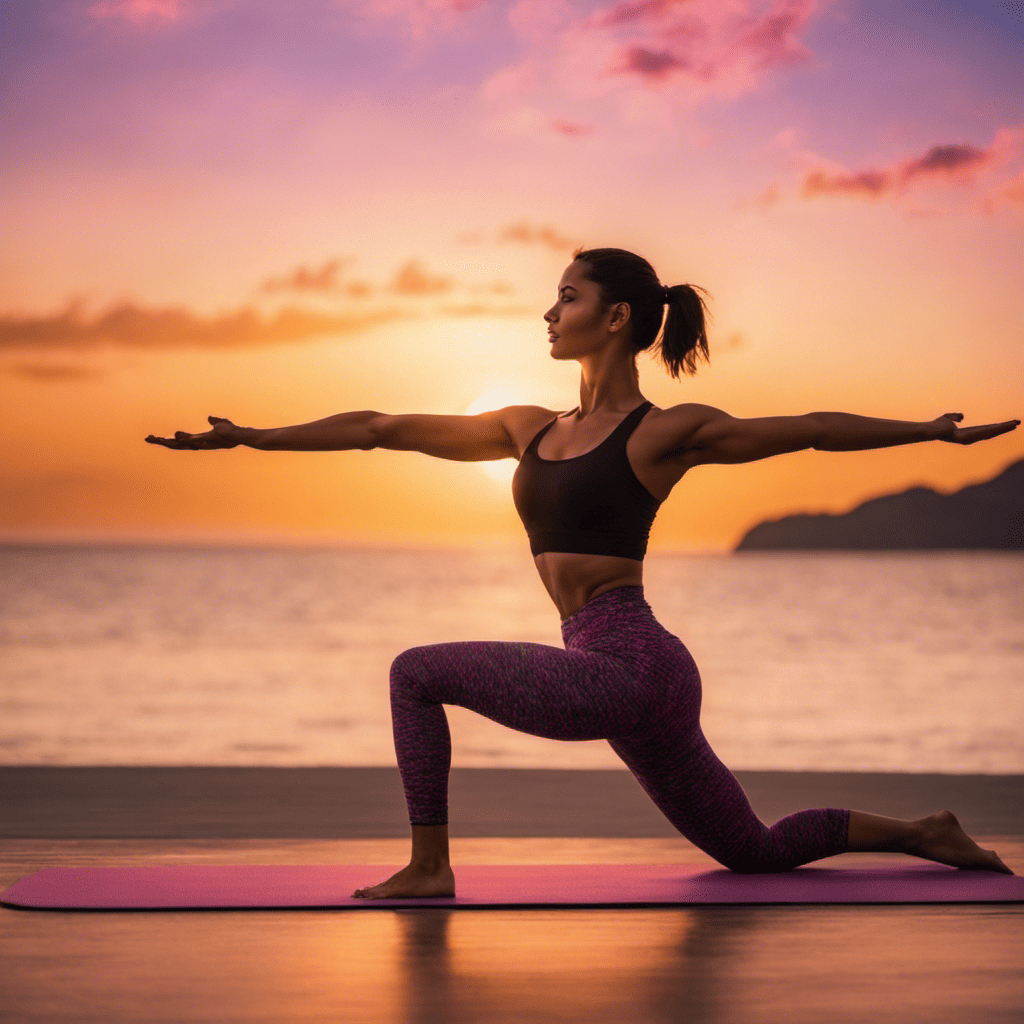How do you start a stretching routine? To begin, you need to understand the difference between flexibility and mobility, learn proper technique, and commit to a consistent schedule. This guide provides the exact steps to build a beginner stretching routine that improves your range of motion and reduces injury risk.
🔑 Key Takeaways
- Two Types: Use dynamic stretching to warm up muscles before activity and static stretching to improve long-term flexibility.
- Reduce Injury by 73%: A consistent stretching routine significantly lowers your risk of muscle strains and joint pain.
- 5-Minute Warm-Up: Always perform light cardio (e.g., jogging in place) before stretching to increase blood flow and muscle pliability.
- Track Progress: Set SMART goals (like touching your toes) and measure your range of motion every two weeks to stay motivated.
- Target Major Groups: Focus on hamstrings, hip flexors, shoulders, and back to counteract the effects of prolonged sitting.
The Benefits of Stretching
Incorporate stretching into your fitness routine to maximize benefits. Stretching is an essential part of any exercise program, not just a warm-up or cool-down. Stretching before and after exercise improves flexibility, increases range of motion, and reduces injury risk.
Stretching before exercise prepares your muscles. It increases blood flow and oxygen supply. This enhances performance and prevents muscle cramps. It loosens tight muscles and joints, making movements more fluid. You are priming your body for physical demands.
Stretching after exercise is equally important. It cools down your body and prevents post-workout muscle soreness. Exercise contracts and shortens muscles. Stretching afterward lengthens and relaxes them, promoting proper recovery. It maintains joint mobility and helps prevent future injuries.
Regular stretching is crucial for injury prevention. It improves muscle balance and alignment, reducing the risk of strains and sprains. Stretching also improves posture and maintains proper body mechanics, minimizing stress on joints and muscles.
Understanding Flexibility and Mobility

Flexibility and mobility work together to enhance physical performance.
Flexibility is your muscles’ and joints’ ability to move through a full range of motion. Mobility is the quality and control of that movement.
Flexibility allows deeper stretches. Mobility allows efficient movement in activities like squatting or throwing.
Improving flexibility provides key benefits. It enhances athletic performance by allowing freer movement with less injury risk. It improves posture, reduces post-exercise muscle soreness, and alleviates joint pain. Flexibility training increases blood flow to muscles and improves overall circulation.
Now, set goals for your stretching routine. Aim to increase flexibility in specific areas or improve overall mobility. Goal-setting keeps you motivated and tracks progress.
Setting Goals for Your Stretching Routine
Effectively set goals to stay motivated and track progress in your stretching routine. Clear goals keep you committed and focused.
Three reasons goal-setting is important:
-
Motivation: Goals give you a target. Whether increasing overall flexibility or achieving a specific yoga pose, a goal provides drive.
-
Measurement: Specific, measurable goals let you track progress. Assess improvements regularly and adjust your routine. This keeps you on track for steady progress.
-
Accountability: Goals create responsibility. You are more likely to take necessary steps to achieve them, staying disciplined.
Goal-setting is crucial for a successful stretching routine. It motivates, tracks progress, and holds you accountable.
Types of Stretching Exercises

Find the stretching exercises that work best for your body and goals. Two common types are dynamic and static stretching.
Dynamic stretching involves moving through a full range of motion. It gently stretches muscles and increases blood flow. This type is ideal for warming up before physical activities. It improves flexibility, mobility, and joint stability. Examples include arm circles, high knees, and walking lunges.
Static stretching involves holding a stretch for 20-30 seconds. This lengthens and relaxes muscles, improving flexibility and reducing tension. Perform static stretches at the end of a workout or during a cool-down. Examples include the seated forward bend and standing quadriceps stretch.
Listen to your body. If unsure, consult a qualified fitness professional or physical therapist for guidance.
Proper Technique and Form
Maintain proper technique and form to maximize benefits and prevent injury.
Importance of Alignment
Keep your body in proper alignment during each stretch.
-
Posture: Keep your spine straight. Engage your core muscles to support your back.
-
Joint Alignment: Align joints properly. Keep knees, elbows, and wrists in line to target the right muscles and avoid strain.
-
Balance: Find your center. Distribute weight evenly to maintain stability and avoid stress on specific muscles.
Following these techniques enhances stretch effectiveness, reduces injury risk, and improves flexibility.
Avoiding Common Mistakes
Focus on proper technique to avoid common mistakes.
Avoid improper posture. Maintain a neutral spine and engage your core to prevent back strain.
Avoid overstretching. Pushing too hard leads to injuries. Focus on gradual, controlled movements and listen to your body’s limits.
Always warm up before stretching. Increase blood flow to muscles to prepare them for movement.
Creating a Stretching Routine

Create an effective stretching routine with three key points.
Optimal Stretching Frequency
Adjust your routine to find the optimal frequency for your body. Stretching too much or too little has negative consequences.
Consider these factors:
- Individual Goals: You may need to stretch more frequently to achieve specific flexibility targets.
- Activity Level: Intense physical activities or sports require more frequent stretching to prevent tightness.
- Recovery Time: Allow muscles time to recover between sessions to avoid overstretching and promote repair.
Finding the right frequency maximizes benefits and minimizes overstretching risks.
Importance of Warm-Up
Always warm up before stretching. It prepares muscles for optimal flexibility and prevents injuries.
A warm-up increases heart rate and circulation, sending more blood to muscles and making them pliable. It activates the nervous system, improving brain-muscle communication.
A proper warm-up includes light aerobic exercises like jogging or jumping jacks, followed by dynamic stretches that mimic your workout movements.
Targeting Specific Muscle Groups
Focus on different muscle groups with compound exercises and stretches that activate multiple areas. This targeted approach improves muscle activation and prevents injury.
Three effective exercises:
-
Squat with Overhead Press: Engages glutes, quads, hamstrings, and shoulders. Promotes muscle activation and coordination.
-
Lunge with Twist: Activates glutes, quads, obliques, and hip flexors. Enhances stability and core strength.
-
Downward Dog to Plank: Activates shoulders, chest, back, core, and hamstrings. Improves body awareness and strengthens multiple groups.
Incorporate these to maximize activation and prevent injuries.
Common Mistakes to Avoid
Avoid skipping warm-up exercises before stretching. This mistake increases injury risk. Warm-ups increase blood flow to muscles, making them more pliable. Skipping this step leads to improper form and overstretching, causing strains or tears.
See the importance in this table:
| Stretching Mistake | Consequences | Prevention |
|---|---|---|
| Skipping warm-up exercises | Improper form, overstretching | Always start with a 5-10 minute warm-up, such as light cardio or dynamic stretches, to prepare your muscles for stretching. |
| Overstretching | Muscle strains, sprains, tears | Avoid pushing your body beyond its limits. Stretch to the point of mild tension, not pain, and gradually increase the intensity over time. |
| Using improper form | Reduced effectiveness, increased risk of injury | Focus on proper technique and alignment during stretching exercises. Seek guidance from a certified trainer or physical therapist if needed. |
Tips for Progress and Maintaining Flexibility
Continue making progress and staying flexible with these tips. Progress tracking ensures you move toward your goals.
Tips to maintain flexibility and prevent injuries:
-
Set Realistic Goals: Establish achievable goals that match your current abilities. This maintains motivation.
-
Gradually Increase Intensity: As you progress, slowly increase stretch intensity to challenge muscles. This promotes gains while minimizing injury risk.
-
Incorporate Variety: Mix up your routine. Try different stretches targeting various muscle groups to prevent imbalances and keep it interesting.
❓ Frequently Asked Questions
What’s the difference between dynamic and static stretching?
Dynamic stretching involves movement (like leg swings) and is for warming up. Static stretching involves holding a position (like a hamstring stretch) and is for cooling down and improving long-term flexibility. Use dynamic before activity and static after.
How long should I hold a static stretch?
Hold a static stretch for 20 to 30 seconds. Research shows this duration is optimal for improving flexibility without triggering the stretch reflex that can cause muscles to tighten. Repeat each stretch 2-3 times.
Can stretching help with back pain?
Yes, targeted stretching can alleviate back pain. Focus on hip flexors, hamstrings, and glutes, as tightness in these areas often contributes to lower back strain. Always consult a doctor or physical therapist for persistent pain.
Is it better to stretch in the morning or evening?
Evening is often better. Your body temperature is higher and muscles are more pliable after daily activity, allowing for a deeper, safer stretch. Morning stretching should be gentle to wake up the body.
Do I need special equipment to start stretching?
No. A yoga mat and comfortable clothes are sufficient. For progression, consider a foam roller for myofascial release or a stretching strap to deepen stretches safely. Equipment is helpful but not required to start.
Conclusion
Start your flexibility journey today. Understand the difference between mobility and flexibility. Use dynamic stretches to warm up and static holds to improve range of motion.
Commit to a consistent routine. Aim for 3-5 sessions per week, even if only 10 minutes long. Track your progress with simple tests like the sit-and-reach. Listen to your body to avoid overstretching.
Your next step is to build your first routine. Combine the exercises listed for major muscle groups. Stay consistent, and you will see measurable improvements in your movement and a reduction in everyday stiffness within a few weeks.
